Getting Your GHS Labels OSHA-Ready
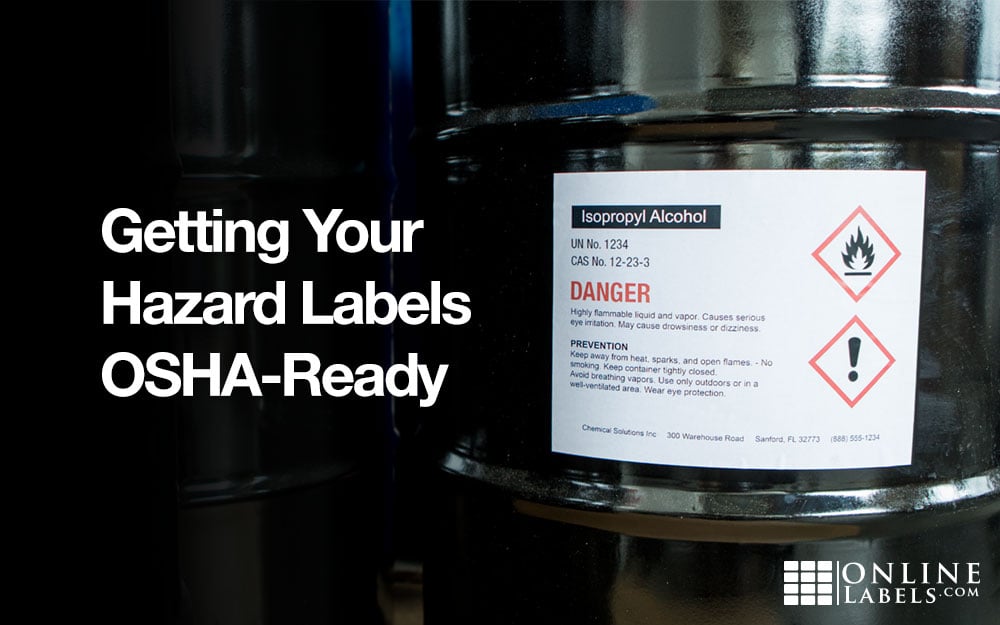
OSHA's updates are part of an effort to improve consistency in hazard prevention labels and overall workplace safety. The emphasis on proper caution labels will provide workers with a better resource to ultimately cut down on workplace injuries and illnesses.
The above GHS label example contains all of the new label requirements. We break down everything you need to know about each section below.
GHS Label Example
The following photo includes the necessary elements for hazard communication labels moving forward. Below, we highlight each section and what your business should know.
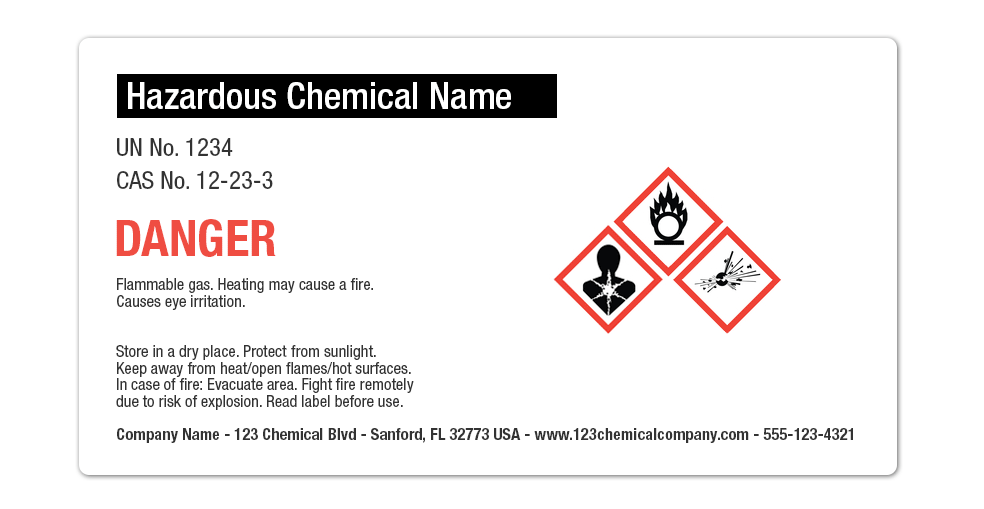
A Product Identifier
This refers to the way a user will identify your chemical. This can be as simple as the chemical name, code number, batch number, or other form of identification.
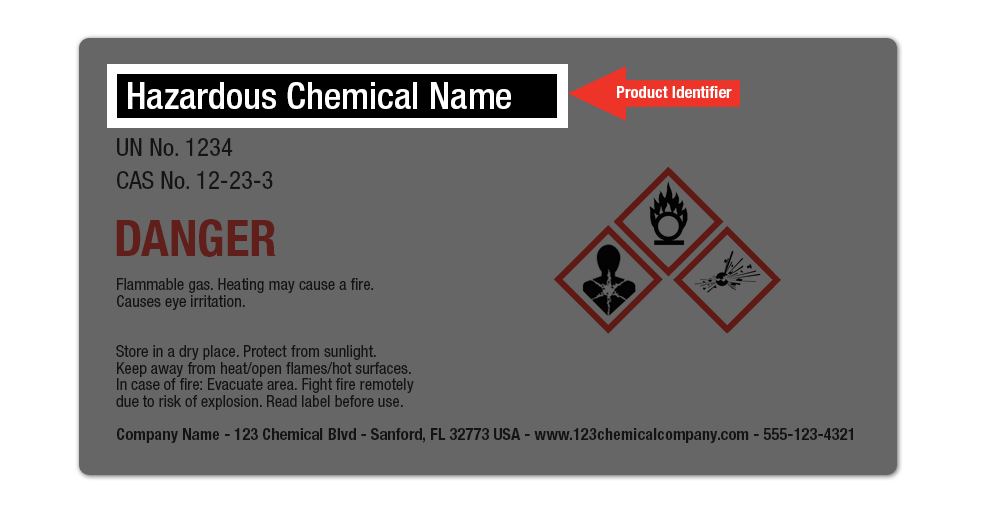
A Signal Word
Signal words identify chemical hazard levels. Readers should be able to easily identify the potential threat level through the signal word. "Danger" and "Warning" are the only two signal words used in hazardous chemical labels.
"Danger" is used when the chemical poses an extreme threat.
"Warning" labels refer to a less severe threat level.
Always use the signal word identifying the most severe hazard. Meaning, if a chemical contains hazards worthy of both a "Warning" and "Danger", use "Danger"as the signal word.
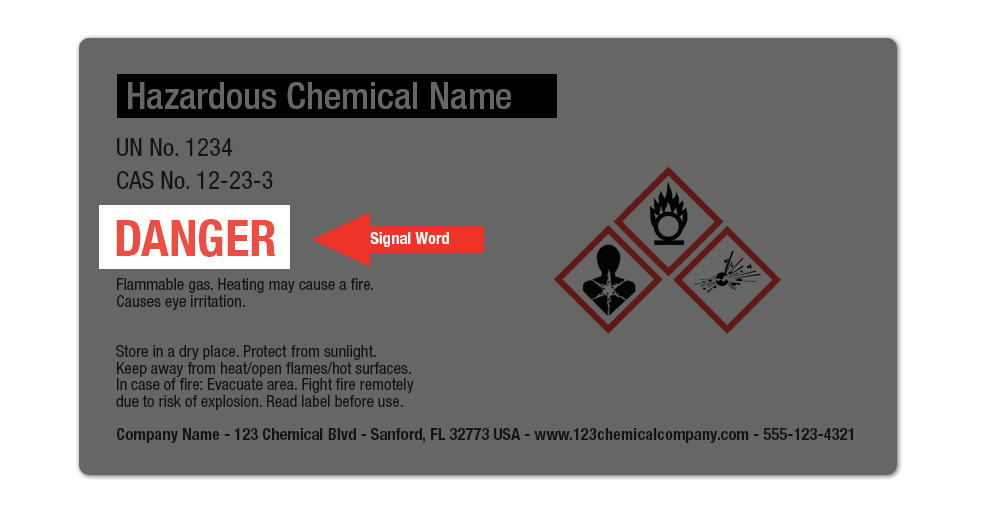
Hazard Statements
Labels must also have hazard statements that are easy-to-read, and specific. Use them to explain the specific health threats associated with the chemical.
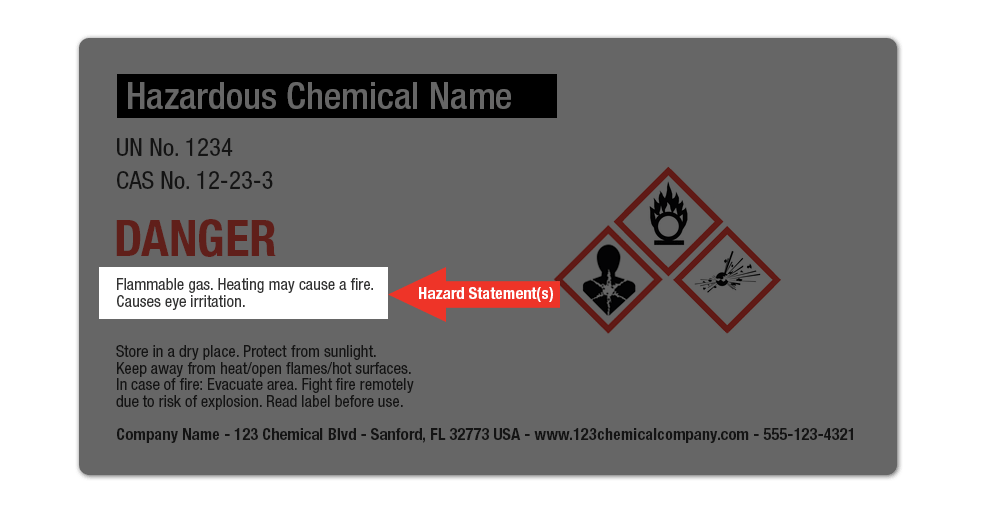
Hazard Pictograms
These give visual representation to the various hazards a chemical may contain. OSHA provides nine approved symbols. They identify several hazards including: "Toxicity," "Explosives," "Flammables," and more.
The symbols relevant to the danger your chemical poses must be on your hazard labels. You can find all of the pre-approved pictograms and their descriptions on OSHA's website.
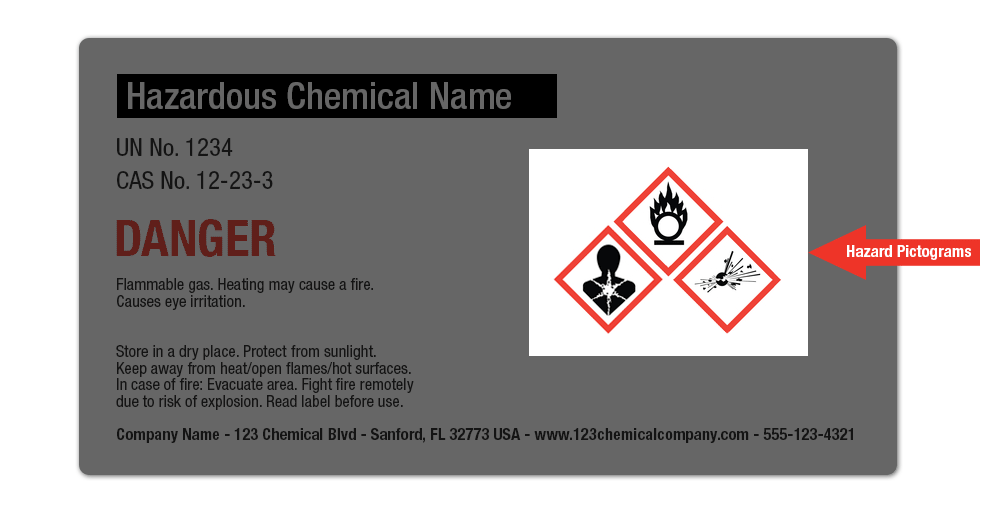
Precautionary Statements
OSHA requires you have statements explaining measures you can take to lessen the risk of harm when handling chemicals. These include both preventive and responsive actions. For the most part, these statements are predetermined by OSHA and can be adjusted for relevance.
Each precaution should be stated separately on the warning label, unless it is altered for readability.

Supplier Identification
Supplier Identification provides the company's name, address, website, and phone number.

We recommend you visit the OSHA website for more information on every new hazard labeling requirement. When you're ready to begin labeling under the new OSHA requirements, you can check out our GHS-compliant selection of sizes.
Generate A GHS LabelOr give your labels the protection they need with polyester-laminated labels.



